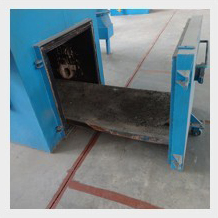Incinerators are an essential tool for safely disposing of various kinds of waste, including medical waste, animal carcasses, and solid waste. However, with so many different types of incinerators on the market, it can be challenging to choose the right one for your specific needs. In this article, we will compare and contrast the most common types of incinerators, to help you make an informed decision.
1. Controlled Air Incinerators
Controlled air incinerators are the most common type of incinerator and are well-suited for burning solid waste and non-hazardous materials. They work by introducing a controlled amount of air into the combustion chamber, which ensures complete combustion and minimal emissions. These incinerators are relatively easy to operate and maintain, but they may not be suitable for certain types of waste, such as medical waste or hazardous materials.
2. Rotary Kiln Incinerators
Rotary kiln incinerators are ideal for high-temperature applications and are often used for the incineration of hazardous and medical waste. They consist of a rotating kiln chamber, which ensures thorough mixing and combustion of the waste materials. These incinerators are known for their high thermal efficiency and are capable of reaching very high temperatures, which is essential for the complete destruction of hazardous materials.
3. Fluidized Bed Incinerators
Fluidized bed incinerators are designed to burn waste materials at lower temperatures, typically between 500-900 degrees Celsius. They work by suspending the waste materials on a bed of inert material, such as sand or ash, and introducing a controlled amount of air to create a fluidized bed of material. These incinerators are well-suited for the incineration of sludge, sewage, and other wet waste materials, as well as solid waste.
4. Multiple Hearth Incinerators
Multiple hearth incinerators are a type of controlled air incinerator that utilizes multiple chambers to efficiently burn waste materials. They are well-suited for the incineration of sludge, sewage, and other types of wet waste, as well as solid waste and non-hazardous materials. These incinerators are known for their high thermal efficiency and low emissions, making them a popular choice for many industrial and municipal applications.
When choosing the right incinerator for your needs, there are several important factors to consider, including the type of waste you will be incinerating, the required temperature and residence time, and the local environmental regulations. By carefully evaluating these factors and comparing the different types of incinerators available, you can select the best incinerator for your specific needs and ensure safe and efficient waste disposal.



